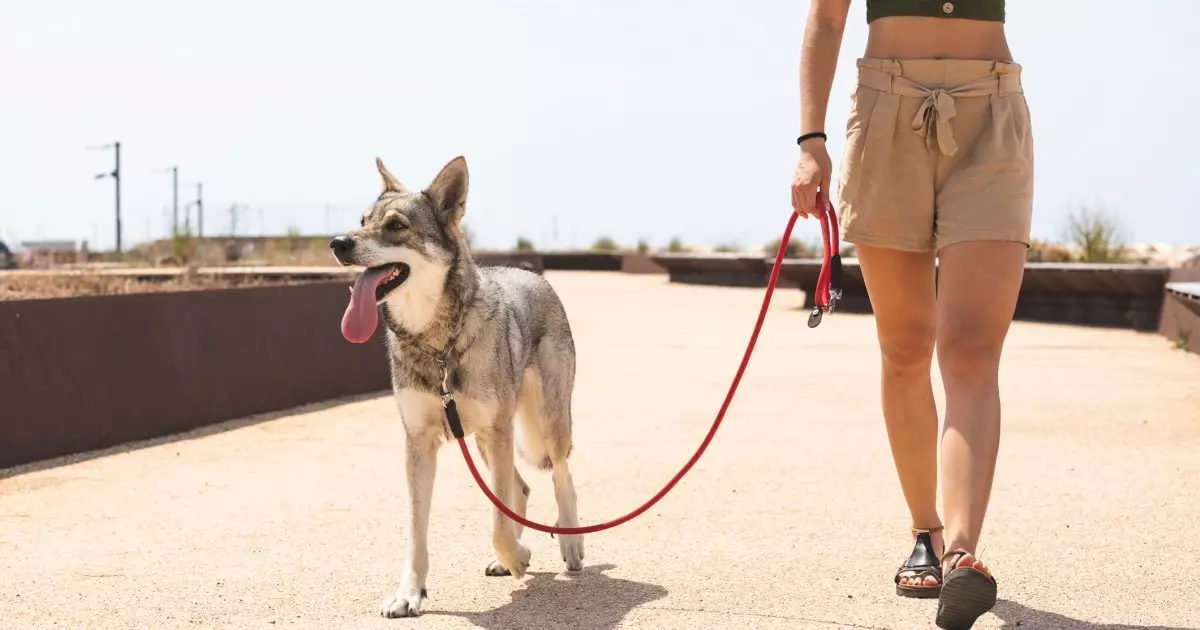Walking your dog is an integral component of nurturing a healthy bond between you and your canine companion. However, the methodology surrounding leash management and your positioning relative to your dog can have profound implications on the overall experience. The belief that a dog should never walk in front of its owner is pervasive but merits closer examination.
It’s vital to comprehend that when a dog walks in front of its owner, it is often engaging in instinctual behavior. Dogs, by their very nature, are prone to exploring their surroundings, motivated to sniff out scents and navigate their environments. When they pull ahead on the leash, they are essentially indulging their curiosity. Often, when they pull and then reach a desirable scent or object, they are rewarded for that behavior, reinforcing the cycle of pulling. The simple act of obtaining a good whiff becomes a victory that encourages them to continue this behavior.
As pet owners, understanding these dynamics is essential. Dogs are instinct-driven, and in their minds, pulling ahead is a way to assert control over their exploration. To mitigate this issue, many canine caretakers turn to specialized equipment. Devices such as front-clip harnesses or head halters can help minimize pulling, allowing for a more controlled walking experience.
A common misconception among dog owners stems from the so-called “alpha dog” theory, which has rooted itself deeply in popular dog training philosophies. This perspective suggests that to establish oneself as the leader of the “pack,” a human must assert dominance over their dog, often interpreting the dog’s behavior through the lens of hierarchy. This view has led many to believe that allowing dogs to walk in front equates to relinquishing control and undermining obedience.
However, contemporary dog training approaches shun this outdated theory, asserting that dogs are not inherently hierarchical animals akin to wolves. In fact, dogs thrive in environments characterized by social bonding and positive reinforcement. The construct of dominance oversimplifies a complex relationship. Training rooted in dominance or fear can result in behavioral challenges and breach the trust vital to human-animal relationships.
When you guide your dog to walk beside you, it fosters a cooperative spirit. This behavior nurtures trust and enhances communication, making sure your dog remains engaged and responsive to your commands. Walking side-by-side allows you to better monitor your dog’s actions, empowering you to correct unwanted behavior immediately. This timely intervention is crucial in preventing the development of detrimental habits.
Moreover, this arrangement provides an excellent opportunity for enhanced training. By teaching commands such as “heel” or “leave it” while maintaining a steady pace, you actively incorporate training into your daily routine. Employing positive reinforcement, such as treats and praise, during walks not only solidifies the desired behaviors but also transforms the experience into an enjoyable outing for both you and your dog.
It is important to recognize that each dog possesses a unique personality and temperament. What works for one dog might not necessarily suit another. Some dogs may have an innate tendency to lead, while others may prefer to stay close. The essence of effective dog walking lies in understanding and respecting those individual traits.
Therefore, the precise dynamics of walking should be tailored to reflect the unique relationship you have with your dog. This means prioritizing trust, respect, and clear communication over adherence to stringent rules of positioning. By fostering an environment that promotes enjoyment and positive experiences, you can cultivate a harmonious walking routine that accommodates both you and your furry friend.
The conversation surrounding whether your dog should walk in front of you is more about understanding behavior than rigid rules. A relaxed and cooperative walking experience can enhance your relationship, yielding a fulfilling and enjoyable bond with your pet. Whether your dog walks beside you, in front, or occasionally checks behind, the ultimate goal should be a shared experience that strengthens the connection between you and your beloved companion.

